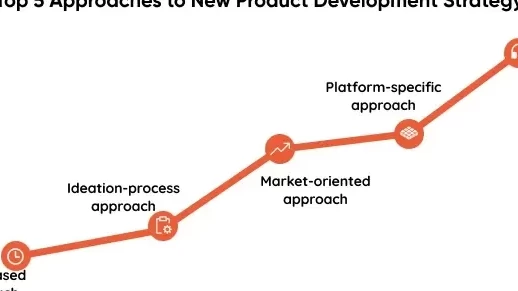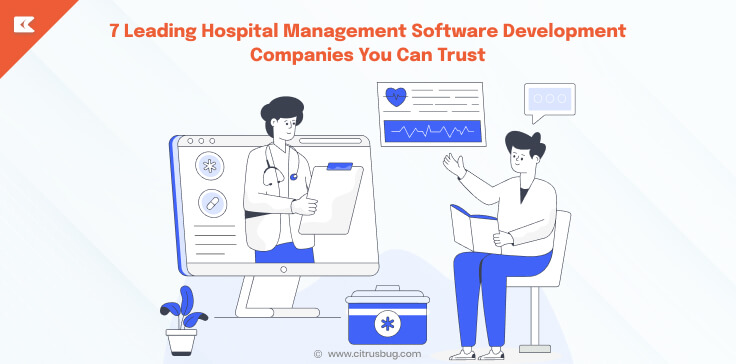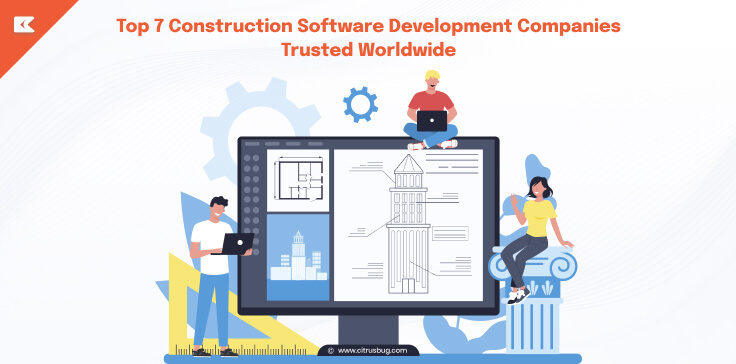Develop a New Product Development Strategy (Examples Included)
- July 20, 2023
-
4563 Views
- by Ishan Vyas
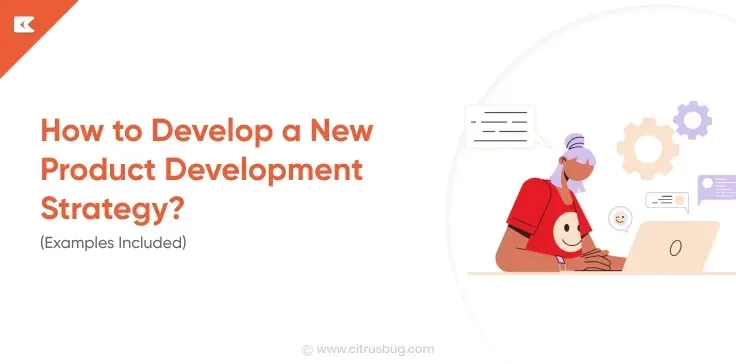
Well, everyone would say – identify product opportunities, define business goals, design prototype, build MVP, prepare a marketing strategy for launch, and iterate product improvement. But no one answers – how to do it; what strategies to follow while planning a Digital Product Development process.
Is it really something that requires meticulous planning?
Yes! This article has all the answers to your questions. It explores the vital elements of an effective strategy for new product development along with real-world examples of successful companies.
What is a Product Development Strategy
A product development strategy is a roadmap for creating and selling new products. It helps companies understand customers and the market, from generating ideas to product introduction. The aim is to satisfy customers and achieve company success.
A strong product development strategy identifies opportunities, sets objectives, and outlines steps and resources to turn ideas into reality. Incorporating knowledge of the product life cycle into your strategy ensures that the product’s journey is well-supported at every phase. By executing this strategy well, companies align efforts with business goals, reduce development risks, and greatly increase the chances of a successful product launch.
Importance of New Product Development Strategy
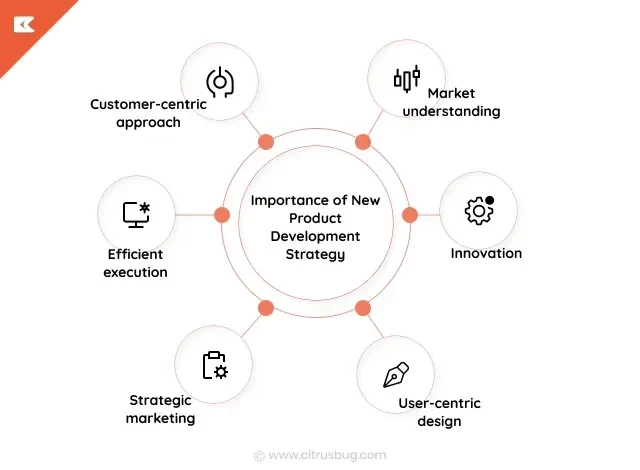
A product development strategy helps create desired and high-quality products that meet customer needs. These strategies also have the potential to positively impact society by improving lives and creating job opportunities.
Apple’s launch of the iPhone in 2007 serves as a prime example of their strategic product development approach.
Their strategy involved:
- Market understanding
- Innovation
- User-centric design
- Strategic marketing
- Efficient execution
- Customer-centric approach
By following a well-executed strategy, Apple revolutionized the smartphone industry, differentiated their product, created a seamless user experience, and established a strong brand presence.
This example highlights the importance of choosing a product development strategy that aligns with your product’s strengths and meets the needs of your target audience.
Some other reasons for implementing a product strategy include
- Customer value
- Demand generation
- Business growth
- High-quality products
- Long-term planning
- Complexity management
Top 5 Approaches to New Product Development Strategy
Product development strategies can enhance and support business positions through various approaches like prioritizing time to market, evaluating technology and market risk, leveraging a strong platform, incorporating customer insights, and internal processes to deliver optimal solutions.
1. Time-based Approach
This approach focuses on being first to market, fast following, or being a laggard.
Being the first to introduce a new product category is proven to be advantageous and linked to long-term success.
Fast followers capitalize on the innovator’s experiences, while laggards offer similar products as competitors.
Companies benefiting the most are those that are first to market. For example, Apple, Uber, and Amazon.
You can shorten time to market through techniques like an escalation process, streamlining product development and launch.
2. Ideation-process Approach
Emphasizes generating innovative ideas through brainstorming sessions to address customer needs or market gaps, and seeking input from internal stakeholders.
Here’s how it works:
– Customer Feedback: Collect customer insights to better understand their needs and preferences.
– Focus Groups: Engage target customers in deeper discussions to gain insights.
– Brainstorming: Encourage creative thinking within the product team to generate ideas.
– Internal Stakeholder Input: Seek input from internal teams for diverse perspectives.
– Market Analysis: Consider market share, demographics, and corporate strategy.
– Improve Existing Product: Identify areas for improvement based on user feedback.
– Early Validation: Validate ideas through prototypes for early feedback.
Product ideas are filtered based on criteria like time to market, risk assessment, platform strength, or customer insights. This process helps generate and prioritize concepts for further development.
3. Market-oriented Approach
This approach centers around understanding and meeting customers’ needs by conducting thorough market research and aligning product development with target market demand.
It includes different types:
– Innovators create new technologies for existing markets.
– Investors in technology acquire or partner with other entities.
– Searchers find new market applications for existing products.
– Business As Usual companies focus on existing products in current markets.
– Middle of the Road companies make incremental improvements to existing products and markets.
This approach allows businesses to align their efforts with market dynamics, technology advancements, and customer demands.
4. Platform-specific Approach
Develops products that align with specific platforms or technologies.
Platforms, resulting from extensive research and development, maximize revenue and business impact by enabling the creation of multiple new product offerings.
Utilizing a platform reduces engineering and time requirements for subsequent product variants, making innovation processes more efficient. It also facilitates efficient entry into new target markets by creating derivatives within a product family.
By capitalizing on existing design work and knowledge, you can streamline product development and enhance your competitive edge.You can also research your competitors and gather data from their websites by using rotating residential proxies to stay anonymous. Choosing the right proxy provider can help ensure seamless and secure data collection, giving you valuable insights without compromising your privacy.
5. Customer-oriented Approach
Places the customer at the center of product development, incorporating their feedback and preferences to create products that deliver exceptional user experiences.
Design Thinking, a popular framework, is used to deeply understand customers and translate insights into successful products.
The process includes:
- Product concept generation
- Planning
- Engineering
- Manufacturing
This approach focuses on customer requirements rather than competitors and can be part of an Agile Product Development process. It may involve creating a Minimum Viable Product (MVP) for early market feedback.
Customer-oriented approach is applicable to both new and existing products, emphasizing customer-centricity throughout the development process.
All these approaches are often combined to suit specific needs. The key is to select approaches that align with company resources, market dynamics, and overall strategy.
Here’s how to develop an effective product development strategy.
How to Develop a Product Development Strategy
Developing a product development strategy requires careful planning and execution.
Here’s how you can approach it:
- Define a Vision: Establish a broad statement of where you want your company to be in the next 3-5 years.
- Create a Strategic Plan: Outline the steps and actions necessary to achieve your vision within a 2-3 year timeframe.
- Develop Roadmaps: Create product and technology roadmaps that connect your strategy to specific programs and projects. These roadmaps show the progression of products and technologies over time.
- Align with Budgeting: Connect your roadmaps to the yearly budgeting process to prioritize future products and allocate necessary resources.
- Establish Strategic Product Planning: Formulate a process that links the company’s long-term vision with the strategic steps required to realize that vision.
- Implement Portfolio Planning: Introduce a yearly portfolio planning process that aligns with budgeting, allowing for systematic decision-making on product concepts.
- Implement Ongoing Portfolio Management: Establish a monthly process for selecting and prioritizing emerging product concepts that align with the company’s strategy.
- Link Strategy with Execution: Ensure a tight connection between strategic direction and product concepts, with ongoing management and planning to support successful execution.
- Embrace New Product Development Process: Implement a structured approach that bridges strategy and execution, considering both product design and business factors that shape the product definition.
Maintaining a balance between strategic planning and ongoing management helps enhance new product development process, foster innovation, and effectively manage product portfolio.
Tips for New Product Development Strategies
Strike Balance Between Speed and Quality
Prioritize the minimum viable product (MVP) to avoid feature overload and focus on essential customer needs. While speed is important, ensure it doesn’t compromise product quality or user experience.
Dedicate resources to perfecting core features that deliver value. Implement agile testing and feedback loops to continuously improve. Emphasize quality assurance by thoroughly testing for bugs and performance. Foster a culture of continuous improvement to refine processes and enhance efficiency.
This way, you can deliver lean products that meet customer needs while upholding a high standard of quality.
Make Customers Part of Your Process
By prioritizing customer satisfaction and incorporating their feedback, you can build long-term relationships and deliver customer-centric products that meet market demands.
Here are effective strategies to engage customers in the product development journey.
1. Customer as the First Step
Begin by envisioning the end result and crafting a press release that highlights the product’s value for customers. This approach keeps the customer at the forefront of your development process. Utilizing tools like an AI Poster Generator can help create visually appealing promotional materials to showcase the product’s benefits effectively.
2. Continuous Feedback
Embrace the Agile philosophy by seeking real-time feedback from customers at every stage. Utilize user engagement metrics to gather insights without relying solely on customer feedback surveys. You can also strengthen trust by showcasing feedback effectively — for example, using testimonial templates to present customer voices in a polished way
3. Periodic Feedback
Even with a traditional approach, periodically expose users to the product for valuable input. Conduct surveys or user testing sessions to gather feedback and make necessary adjustments.
Experiment With Your Product and Strategy
Experimentation is vital for new concept development, especially with Agile methodologies like Scrum because it facilitates rapid iteration and adaptation based on results.
Be brave and test different features, designs, or approaches using A/B testing to gauge user engagement. Gradually roll out changes while monitoring user statistics, allowing for quick reversals if needed.
Data-driven decision making, and continuous improvement are key outcomes of experimentation. By integrating experimentation into your strategy, you can optimize your product’s performance, user experience, and overall success. Utilize Microsoft Dynamics CRM Services to seamlessly incorporate these insights into your business processes.
Make Use of Your Existing Product
Often, we consider product development strategy only for new products, but it should also be applied to existing ones.
For example, create a new version of your existing product with slight changes to determine which features customers would like to see improved.
is one of the finest examples. Generative AI Search Offer a trial of the latest version in BETA like big companies do. Google’s
After modification, if the existing market is not responding to it, change the idea. Undo the features that you added and strategize and add others.
Find new markets. This could include targeting a different age group or marketing to another geographical location.
Maintain a Realistic Product Development Roadmap
Design and maintain a realistic product development roadmap for a successful new product ideas.
- Use goal-oriented methodologies like OKRs or SMART goals to establish clear objectives.
- Regularly revisit and adapt the roadmap based on feedback and changing market conditions.
- Communicate the roadmap to stakeholders for better transparency and collaboration.
- Prioritize tasks and sequence them logically.
- Evaluate progress, identify bottlenecks, and make necessary adjustments.
A well-defined roadmap provides guidance, manages expectations, and increases the likelihood of delivering a successful product on time.
Examples of New Product Development Strategy
Here are some product development examples of brands like Coca-Cola, IKEA, Kellogg, Netflix that implemented product strategy during their new product development process.
Coca-Cola’s complete brand development strategy revolves around prioritizing the voice of the entire user base. By embracing consumer preferences and evolving with changing tastes, the company aims to thrive. They have introduced new products like juices, coconut water, and organic tea to cater to consumer demand.
Coca-Cola acknowledges the need for beverages with added benefits and smaller packaging options. Continuously listening to the voice of the customer remains a key focus, allowing Coca-Cola to respond effectively and meet consumer needs. This customer-centric approach drives their business strategy and helps them remain competitive.
IKEA’s product idea focuses on providing low-cost, quality products through an extensive global supply chain. They lease equipment to suppliers, ensuring quality standards. Their supply chain management allows for a product differentiation strategy, offering furnishings for diverse homes. IKEA’s commitment to sustainable design principles is reflected in their smart design approach, enabled by their strong supply chain capabilities.
Kellogg’s marketing strategy is all about adapting to changing consumer preferences by divesting and acquiring brands. With the decline in the cereal market due to shifting trends away from sugar and carbs, Kellogg has divested iconic cereal brands and acquired health-conscious brands like RXBAR. This strategy allows Kellogg to better serve potential customers and stay relevant in the evolving multiple markets landscape.
Amazon’s product development strategy is a prime example of a customer-oriented approach. It begins by writing a simplified press release for the product, focusing on meeting customer needs. They then work backward from the press release to develop the actual product, engaging with customers throughout the process.
This approach ensures that Amazon creates specific solutions that address identified customer pain points effectively. By aligning their internal process with customer feedback, Amazon delivers products that prioritize customer satisfaction.
Microsoft’s idea generation revolves around strategic partnerships and embracing emerging technologies. The company has shifted its focus from smartphones to AI and Cloud. It established a dedicated AI division and prioritized collaboration with open-source software.
By emphasizing innovation and leveraging partnerships, Microsoft differentiated itself from competitors like Google, Twitter, and Facebook, offering a discrete product rather than relying solely on user data.
This has enabled Microsoft to stay at the forefront of the tech industry and gain competitive advantage over its competitors.
Netflix employs a profit-driven strategy, focusing on margin growth and customer retention. By offering unlimited access to a vast library of high-quality original content, Netflix captivates viewers and builds a strong brand known for easy movie enjoyment.
Its personalized user experience and seamless interface provide a competitive edge that is hard to replicate. As the largest streaming service globally, Netflix’s marketing strategy revolves around maximizing adoption and retention through compelling content and a trusted brand.
Wrapping Up
By following a systematic approach and incorporating key elements like market research, ideation, and strategic partnerships, you can enhance your chances of creating innovative and successful products.
Examples, such as Apple’s meticulous approach, highlight the importance of strategic thinking and customer-centricity. Continuously evaluating and refining the strategy is essential for long-term growth and profitability.
So, embrace these principles, implement the tips to navigate the complexities of the product development process and position your business for success.





 SaaS Development
SaaS Development Web Application Development
Web Application Development Mobile Application Development
Mobile Application Development Custom Software Development
Custom Software Development Cloud Development
Cloud Development DevOps Development
DevOps Development MVP Development
MVP Development Digital Product Development
Digital Product Development Hire Chatbot Developers
Hire Chatbot Developers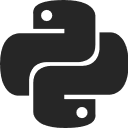 Hire Python Developers
Hire Python Developers Hire Django Developers
Hire Django Developers Hire ReactJS Developers
Hire ReactJS Developers Hire AngularJS Developers
Hire AngularJS Developers Hire VueJS Developers
Hire VueJS Developers Hire Full Stack Developers
Hire Full Stack Developers Hire Back End Developers
Hire Back End Developers Hire Front End Developers
Hire Front End Developers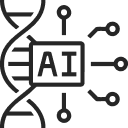 AI Healthcare Software Development & Consulting
AI Healthcare Software Development & Consulting Healthcare App Development
Healthcare App Development EHR Software Development
EHR Software Development Healthcare AI Chatbot Development
Healthcare AI Chatbot Development Telemedicine App Development Company
Telemedicine App Development Company Medical Billing Software Development
Medical Billing Software Development Fitness App Development
Fitness App Development RPM Software Development
RPM Software Development Medicine Delivery App Development
Medicine Delivery App Development Medical Device Software Development
Medical Device Software Development Patient Engagement Software Solutions
Patient Engagement Software Solutions Mental Health App Development
Mental Health App Development Healthcare IT Consulting
Healthcare IT Consulting Healthcare CRM Software Development
Healthcare CRM Software Development Healthcare IT Managed Services
Healthcare IT Managed Services Healthcare Software Testing services
Healthcare Software Testing services Medical Practice Management Software
Medical Practice Management Software Outsourcing Healthcare IT Services
Outsourcing Healthcare IT Services IoT Solutions for Healthcare
IoT Solutions for Healthcare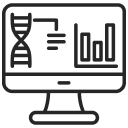 Medical Image Analysis Software Development Services
Medical Image Analysis Software Development Services Lending Software Development Services
Lending Software Development Services Payment Gateway Software Development
Payment Gateway Software Development Accounting Software Development
Accounting Software Development AI-Driven Banking App Development
AI-Driven Banking App Development Insurance Software Development
Insurance Software Development Finance Software Development
Finance Software Development Loan Management Software Development
Loan Management Software Development Decentralized Finance Development Services
Decentralized Finance Development Services eWallet App Development
eWallet App Development Payment App Development
Payment App Development Money Transfer App Development
Money Transfer App Development Mortgage Software Development
Mortgage Software Development Insurance Fraud Detection Software Development
Insurance Fraud Detection Software Development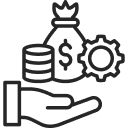 Wealth Management Software Development
Wealth Management Software Development Cryptocurrency Exchange Platform Development
Cryptocurrency Exchange Platform Development Neobank App Development
Neobank App Development Stock Trading App Development
Stock Trading App Development AML software Development
AML software Development Web3 Wallet Development
Web3 Wallet Development Robo-Advisor App Development
Robo-Advisor App Development Supply Chain Management Software Development
Supply Chain Management Software Development Fleet Management Software Development
Fleet Management Software Development Warehouse Management Software Development
Warehouse Management Software Development LMS Development
LMS Development Education App Development
Education App Development Inventory Management Software Development
Inventory Management Software Development Property Management Software Development
Property Management Software Development Real Estate CRM Software Development
Real Estate CRM Software Development Real Estate Document Management Software
Real Estate Document Management Software Construction App Development
Construction App Development Construction ERP Software Development
Construction ERP Software Development





